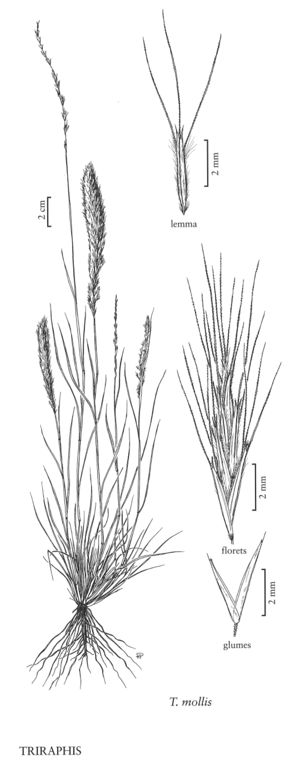Difference between revisions of "Triraphis mollis"
imported>Volume Importer |
imported>Volume Importer |
||
| Line 43: | Line 43: | ||
|publication year= | |publication year= | ||
|special status=Introduced | |special status=Introduced | ||
| − | |source xml=https:// | + | |source xml=https://bitbucket.org/aafc-mbb/fna-data-curation/src/2e0870ddd59836b60bcf96646a41e87ea5a5943a/coarse_grained_fna_xml/V25/V25_46.xml |
|subfamily=Poaceae subfam. Chloridoideae | |subfamily=Poaceae subfam. Chloridoideae | ||
|tribe=Poaceae tribe Cynodonteae | |tribe=Poaceae tribe Cynodonteae | ||
Revision as of 21:04, 5 November 2020
Plants short-lived perennials. Culms 2-90 cm, sometimes rooting at the nodes; nodes glabrous. Ligules membranous, long-ciliate, central cilia 0.5-1.6 mm, those at the sides to 3 mm, stiff; blades 7-24 cm long, 2-5 mm wide, usually involute, rarely flat. Panicles 6-30 cm long, 1.5-3 cm wide; primary branches to 4.5 cm, appressed or ascending. Lower glumes 3-4 mm, mucronate; upper glumes 4-5 mm, 2-toothed; calluses about 0.5 mm, with hairs; lemmas 3-5 mm, hairs on the veins to 2 mm, lobes about 1 mm, central awns 5-7 mm, lateral awns 6-7 mm. 2n = unknown.
Discussion
Triraphis mollis usually flowers in response to rain. It is common on sandy soils in New South Wales, Australia. In the Flora region it is currently known only from Dimmit County, Texas, but it will probably spread.
Selected References
None.
